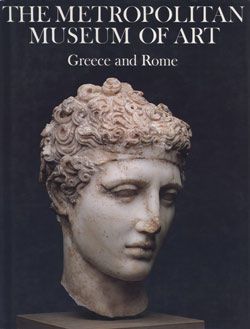Glass jug with chain handle
Colorless with pale blue green tinge; handle and trails in same glass.
Outsplayed and rounded rim; funnel-shaped mouth and almost no neck; conical body, then turned in sharply with broad, shallow undercurve; applied solid foot ring, sloping inwards with tooled irregular indent in one side; central kick in bottom with circular pontil mark; chain handle applied to body as two large, thick pads, drawn up and outwards as two rods, pinched together five times to form vertical row of loop, then turned in horizontally as a single strap, folded up into a hollow loop above rim, and trailed off on underside of mouth.
Single horizontal trail on underside of mouth below rim; a finer trail wound horizontally 1½ times around base of mouth; body decorated with a pattern of sixteen evenly-spaced ribs extending from base of mouth to edge of side.
Broken and repaired, but complete, with cracks around mouth and top of handle; many pinprick bubbles in foot ring; limy encrustation, dulling, iridescence, and creamy brown weathering, with soil encrustation on interior.
The jug is said to have been found in a Roman tomb at the ancient site of Caesaromagus in 1863, together with another larger jug (81.10.168), a cup (81.10.85), and a coin of the Gallic emperor Postumus, which was minted between A.D. 260 and 268.
Due to rights restrictions, this image cannot be enlarged, viewed at full screen, or downloaded.


